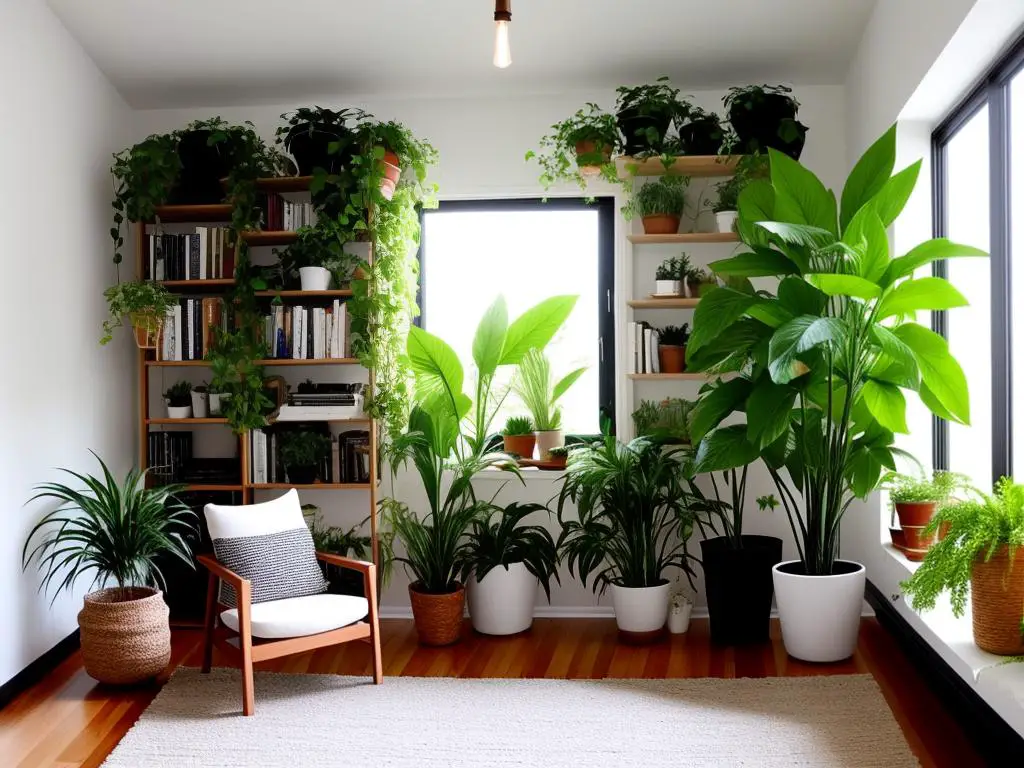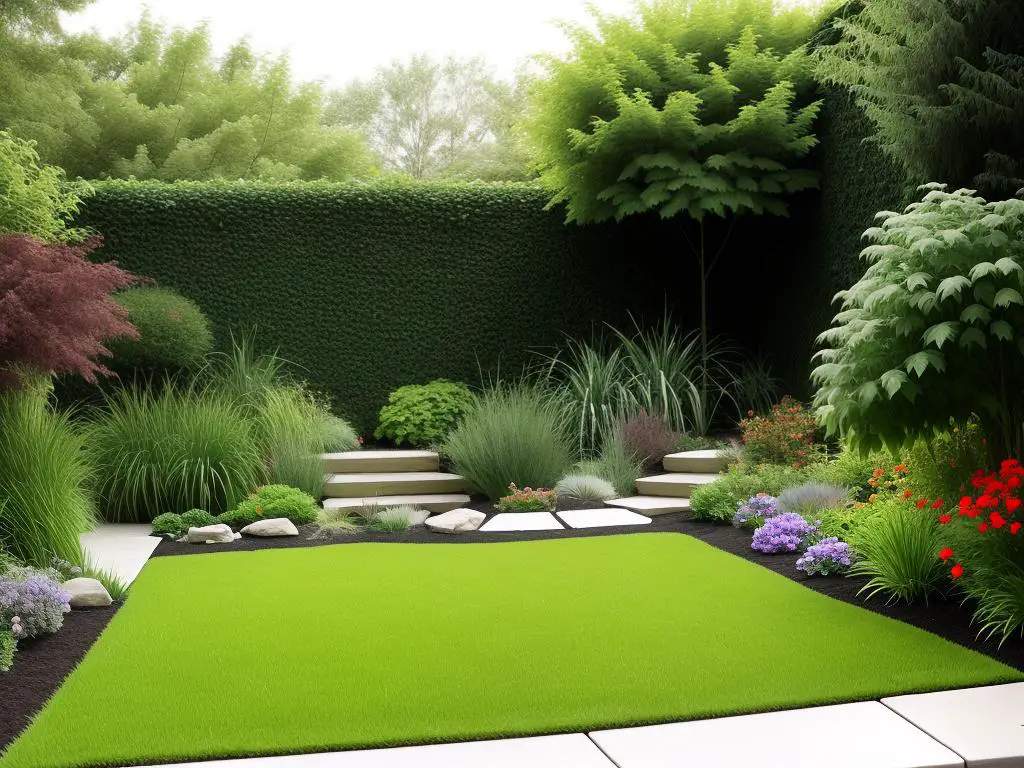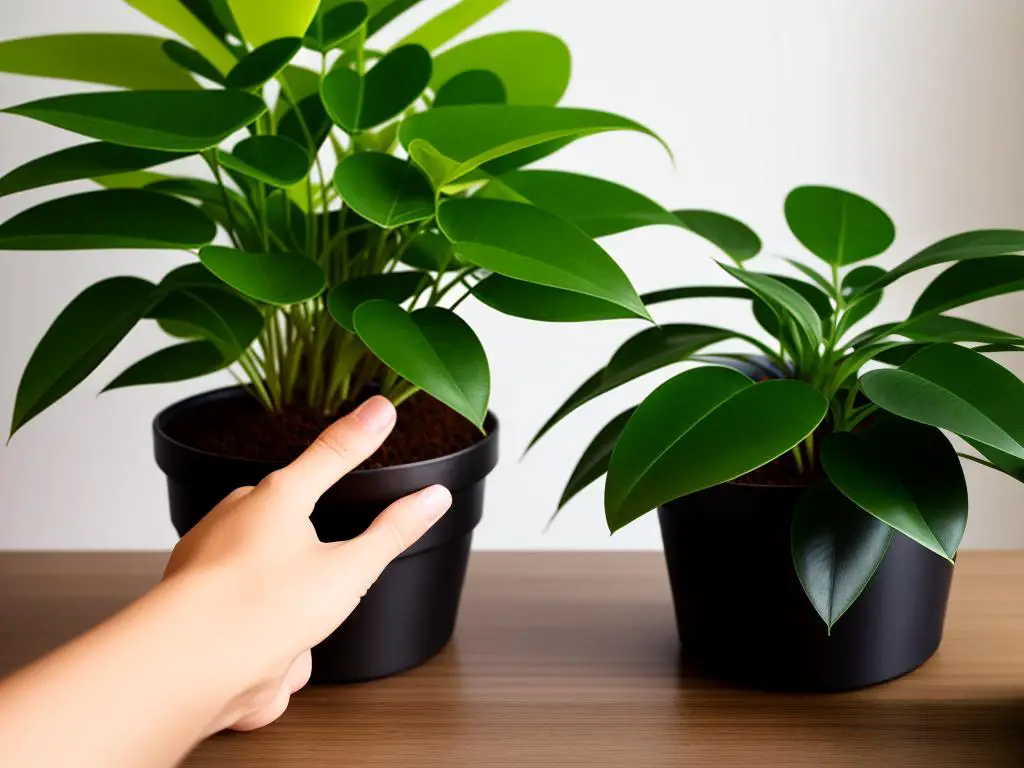Houseplants serve as magnificent additions to any dwelling place, bringing in a dash of nature’s verdancy right within the walls of our homes. As new generations become progressively conscious about the well-being of the planet, their desire to connect with nature is shaping up in the form of growing indoor flora. This essay, therefore, embarks on a journey into the delightful world of houseplants. Through the course of the text, we shall unravel the basics of houseplants, from understanding their biology to the diverse species one can choose to nurture. Subsequently, we explore methods to select the perfect houseplant fitting your requirements, as well as the essentials of houseplant care. Lastly, we shall delve into the art of creating an idyllic indoor garden.
Understanding the Basics of Houseplants
Understanding the Essentials of Houseplants
Like humans, all plants need certain basic necessities to survive, such as water, sunlight, and nutrients. Owning a houseplant is significantly more enjoyable when these essential components are understood and provided appropriately, resulting in a thriving plant that not only adds aesthetic beauty to your home, but also improves your indoor air quality by filtering harmful toxins.
Benefits of Owning Houseplants
Houseplants offer numerous advantages beyond just their visual appeal. From a wellness perspective, they have been shown to reduce stress levels and create a feeling of wellbeing. Many houseplants increase humidity and produce oxygen, enhancing air quality. They have also been found to absorb noise, making indoor environments feel more comfortable and tranquil.
Photosynthesis: The Core Functionality of Plant Life
Photosynthesis is a fundamental mechanism that sustains plant growth. It’s the process through which plants convert light energy, typically from the sun, into chemical energy in the form of glucose or other sugars. These sugars provide the energy plants need to grow and reproduce. In-home plants use light from windows or occasionally from artificial lights to perform photosynthesis.
Understanding photosynthesis can guide us to provide the right type and amount of light, influencing the health and growth of our houseplants. For instance, ferns and ivies thrive in shaded areas with indirect light; on the contrary, succulents and cacti require a lot of direct sunlight.
Plant Biology: Getting to Know Your Houseplant
Every houseplant comes with its own unique biological characteristics. Some plants are succulents, storing water in their leaves and body and thus requiring less habitual watering. Others, like ferns, require constant moisture to remain healthy. Recognising if a plant has thin or thick leaves, for example, can give clues as to the amount of water the plant needs. The root system also plays an essential role; tuberous roots store sustenance, while fibrous roots absorb it.
Discovering Common Houseplant Species
The diversity amongst houseplants is immense. Some popular types include the fiddle-leaf fig, snake plant and Chinese money plant, which have diverse care requirements.
Fiddle-leaf figs are trendy due to their large, glossy leaves. They need lots of indirect light and prefer their soil to dry out slightly between waterings. Snake plants are incredibly hardy and can survive low light levels and infrequent watering. In contrast, the Chinese money plant does best in a bright, indirect light and prefers humid conditions.
Understanding the biology of your houseplant species can tremendously support you in providing it with the right care and conditions.
Understanding Growth Conditions of Houseplants
Each houseplant has a unique set of requirements for growth, indicating specific needs related to light, water, and humidity levels. To illustrate, tropical plants usually demand a high degree of humidity coupled with frequent watering, while cacti and certain types of succulents thrive with scarce watering and intense light.
Therefore, comprehending your specific houseplant’s requirements is crucial for creating the most conducive environment for their growth. When you offer such personalised care, it allows your indoor plants to thrive, bestowing upon your home the gifts of joy, beauty, and enhanced air quality for many years to come.

Choosing the Right Houseplant
Selecting the Appropriate Houseplant
The quest for houseplants can often become a voyage of exploration within the domain of indoor greenery. The selection is governed by a blend of the living environment and individual taste. Factors that make a significant difference include the amount of light, changes in temperature, and humidity conditions. Additionally, one’s willingness and availability of time also play a crucial role in maintaining their indoor plant life.
Light Level Considerations
Plants, like humans, have varying degrees of tolerance for light, with some thriving in bountiful sunlight and others preferring the solace of shade. When performing a houseplant selection, the quantity and quality of light in your indoor space is a significant factor. Succulents, for instance, are popular for their affinity with substantial sunlight, whilst conversely, plants such as ferns and peace lilies can survive under the minima of light.
Balancing Temperature and Humidity
When navigated correctly, the sometimes clandestine relationship between temperature and humidity can yield a glorious plant interior. Houseplants identify with differing temperature and humidity conditions, typically categorised by their origin. Tropical plants, for the most part, require high levels of humidity and a moderately warm temperature to flourish. This includes varieties like Boston Ferns and Spider Plants. On the flip side, succulents and cacti belonging to the desert realm, rejoice in drier conditions with cooler nocturnal fall.
The Busy Household
A critical yet often overlooked element in selecting houseplants is the individual’s schedule. Houseplants such as the hardy snake plant, heartleaf philodendron, and the ZZ plant will continue to operate under the radar, with minimal levels of maintenance. These plants are ideal for those with vigorous routines who may not always remember the need for regular watering.
Exploring Popular Houseplant Types
Succulents and Cacti
Succulents, embodying a vast range of shapes, sizes, and colours, are a favourite amongst indoor plants, prized for their striking visual appeal and relatively low-maintenance care. Equally, cacti are uniquely versatile, content to reside in sunny windowsills for extended periods without the need for water.
Ferns
Ferns, with their lush foliage, offer a distinctly tropical vibe to any interior. Boston and Maidenhair ferns in particular are favoured for indoor planting. However, they require consistent care, relishing in high humidity and indirect light.
Houseplants with Vibrant Blooms
For those who desire bursts of colour within their living space, flowering houseplants might be just the ticket. They’re known to add a noticeable brightness to any indoor environment. Examples of these are Peace Lilies, which are endowed with striking white blooms and have the ability to flourish even in limited lighting. Conversely, African Violets and Geraniums, which offer a vast spectrum of colourful flowers, call for more substantial light exposure.

Essential Care for Your Houseplants
Familiarising Yourself with Your Houseplant’s Requirements
Each houseplant possesses its own unique set of needs, and getting to grips with these is paramount to effective nurturing. Some plants have a preference for abundant sunlight, whilst others are entirely content in more shadowed areas. Similarly, the water requirements of houseplants can vary greatly. For instance, plants such as succulents and cacti are designed to store water and therefore require watering less frequently, as opposed to ferns, which usually thrive under humid conditions. Haven’t forgotten about temperature requirements, which should align with their individual natural habitats.
This understanding of unique plant preferences can empower young adults to create ideal growing conditions for their houseplants, thus promoting their successful cultivation.
Watering Techniques
Watering is one of the most critical aspects of caring for your houseplants. However, the frequency and amount of watering can vary depending on the plant type, pot size, climate, and season.
Most houseplants prefer their soil to dry out a touch between watering. Some, such as orchids and air plants, benefit from being misted rather than soaked. Overwatering is a common issue with houseplants; signs of this include yellowing leaves, wilting or root rot.
When to Repot
Repotting your houseplants is an essential part of their care routine. A general rule of thumb is to repot every two years, although some fast-growing plants may need repotting annually. Signs that your plant needs repotting include water draining out rapidly after watering, roots appearing on the surface or poking out of drainage holes, slow growth or the plant becoming top-heavy.
Select an appropriate pot size that’s slightly larger than the existing one, ensuring it has plenty of drainage holes. Carefully remove the plant, using a knife if necessary to loosen the root ball, then plant it in the new pot, filling in with fresh compost.
Correcting Common Houseplant Issues
Yellowing leaves can be an indication of overwatering, too much light, nutrient deficiency, or even pests. Leaves dropping, on the other hand, could indicate underwatering, a sudden temperature change, or shock from being moved.
If your houseplants are experiencing these issues, ascertain the cause and adjust their care routine accordingly. Remember, it’s not always fatal; many plants will bounce back with the correct care.
Minimising Pest Problems
No matter how well you take care of your plants, pests will inevitably find their way in at some point. Spider mites, aphids, and scale are common houseplant pests. Using a solution of mild soap and water, regularly wiping your plant’s leaves can help prevent these. For more stubborn pests, an insecticidal soap spray may be necessary.
Beneficial Houseplant Maintenance Tools
The right tools can make houseplant care easier. A few essentials include a watering can with a long spout, a pair of sharp secateurs for pruning, a soft cloth for wiping leaves, and a spray bottle for misting.
Additionally, consider investing in a good quality liquid houseplant feed. Feeding your plant helps supplement nutrient levels in the potting soil, even more so necessary for plants undergoing rapid growth phases.
Finally, a soil moisture meter can be a handy tool, especially for those just starting with houseplants. Over and underwatering is a common problem, and a moisture meter can help you assess when your plant needs watering.
Nurturing Plants: A Rewarding Expedition
Tending to your indoor greenery isn’t just about hydrating them and crossing your fingers. It demands a commitment to discern what each species requires and adopting those needs as they transform across seasons or stages of growth. With this insight, you’re well equipped to cultivate lush, robust houseplants.

Creating an Indoor Garden
Constructing Your Indoor Eden: The Key Components
The secret of crafting a prosperous indoor garden rests on recognising the essential needs of your houseplants and arranging them in a manner that not only augments the beauty of your home but also aids in their healthy progression. Let’s plunge into this exploration, step by step.
Choosing Indoor Plant Types
The most primary step towards creating an efficient indoor garden is selecting the appropriate types of houseplants. The plant combinations must cater to the aesthetic appeal along with the available light, temperature, and air conditions of your interiors. Here are some commonly preferred indoor plant types:
- Green plants: These include trailing plants like heartleaf philodendron and flowering plants like peace lilies. They are low maintenance, adapt easily to indoor climatic conditions, and blend well with most interior decors.
- Succulents and cacti: They are ideal for indoor gardens because of their resilience, capacity to store water, and wide variety of shapes and colours.
- Herbaceous plants: Some herbaceous plants like rosemary or basil can also thrive indoors and even be used for culinary purposes.
Utilising Space Efficiently
There’s always room for greenery, regardless of how small or cluttered your area might seem. The trick lies in smart spacing:
- Hanging gardens: If you’re short on space or want to add a unique twist to your interiors, hanging plants like spider plants or trailing vines can be a great choice.
- Shelves and tiers: Use multi-level plant stands or ladder shelves to house your plants, allowing them to capture sunlight more efficiently.
- Corner clusters: A clever way to fill up empty interior corners is by clustering three to four different types of houseplants in varying heights.
Designing Ornamental Display
Displaying houseplants shouldn’t be just about lining them up on a windowsill. Think out of the box and consider the below options:
- Terrariums: Terrariums are miniature indoor gardens inside glass containers. They can house a diverse range of small houseplants and add an element of charm to your space.
- Theme-based arrangements: Pick a theme. It could be color-wise, texture-wise, size-wise, or even scent-wise, and arrange your plants accordingly.
- Containers and pots: The pots and containers you choose to display your plants could act as complementary design elements to your interiors.
Factors of Coexistence
Certain houseplants thrive better when placed alongside others. For instance, aloe vera and jade plant both prefer sunny locations and can be grouped together. On the other hand, ferns require high humidity, so placing them beside succulents might not be a good idea.
Remember, the general rule of thumb is maintaining a balance between aesthetics and the growth requirements of your indoor plants. Once you find that harmony, not only will your indoor garden look lively and attractive, but your houseplants, too, will grow flourishing and healthy.

A captivating blend of science, art, and nature, the endeavor of owning and caring for houseplants can be an extraordinarily rewarding journey. It is a testament to life’s simple yet profound pleasures and a means to bring a piece of nature’s tranquility into our daily lives. This journey is not merely about adding an aesthetic value to our living spaces. Rather, it’s about understanding the very essence of life and growth, appreciating the symbiotic relationship we share with these silent dwellers. The intricate dance of ensuring the right conditions for each species and reveling in their growth is a remarkable process. Ownership of houseplants is an ever-evolving learning experience, an exquisite testament to the enduring beauty of life around us, one that we have the privilege to cultivate.
